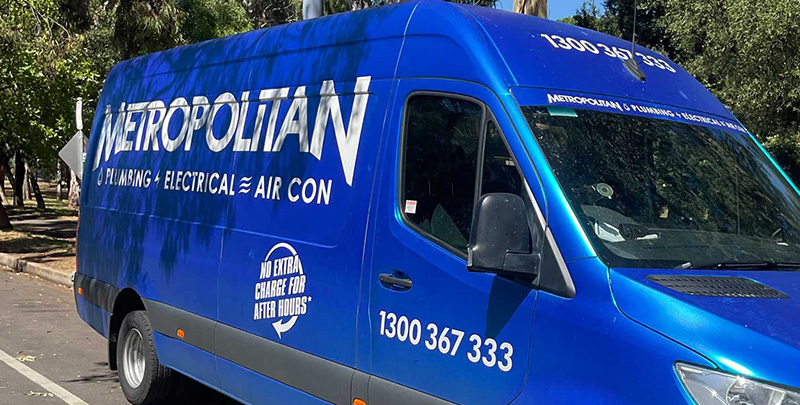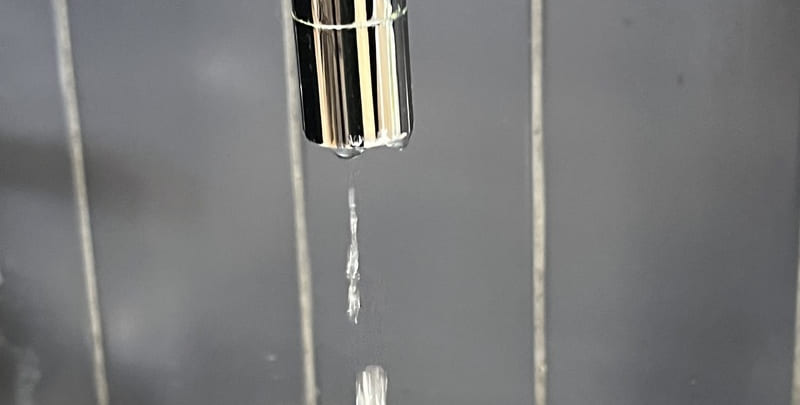
Why You Shouldn't Ignore a Leaking Tap
Leaking taps are an all-too-common household woe. Almost everyone has encountered that persistent, annoying drip-drip-drip sound in the dead of night.
It’s easy to brush it off as a minor bathroom nuisance, but many don’t realise this seemingly innocuous issue can have far-reaching consequences. We often ignore these severe plumbing problems as quirks, dismissing them as part and parcel of homeownership.
Causes of Leaking Tap
Leaking taps can result from various causes, ranging from simple wear and tear to more complex issues. Understanding these common causes is essential for effective troubleshooting and timely repairs. Here are some prevalent reasons taps may develop leaks:
- Worn-out washers: Over time, the constant turning on and off of taps can cause the washers inside the tap mechanism to wear out. Washers create a seal to prevent water from flowing when the tap is in the off position. If the tap washers become degraded or damaged, water can seep through, leading to a leak.
- Loose or worn O-rings: O-rings are another component that helps maintain a watertight seal in the tap. Like washers, O-rings can become loose or deteriorate over time, causing leaks. Checking and replacing these small but crucial parts can often resolve the issue.
- Corroded valve seat: The valve seat is the part of the jumper valve under the tap where the spout and the tap meet. If corrosion occurs on the valve seat, it can compromise the seal and result in a leak. Regular maintenance can help prevent decay, ensuring the longevity of the valve seat.
- Faulty cartridge: Modern taps often use cartridges instead of traditional washers. If the cartridge becomes damaged or the washer is worn, it can lead to leaks. Cartridge issues may require replacement to restore the tap’s proper functionality.
- High water pressure: Excessively high water pressure from dripping taps can stress tap components, leading to leaks. Pressure-regulating devices or installing a water pressure reducer can help mitigate this issue and protect the plumbing system.
- Improper installation: Poor installation or incorrect assembly of tap components can result in leaks. It emphasises the importance of professional installation to ensure all parts are correctly fitted and tightened.
Regular inspection and proactive maintenance can help identify and address these issues before they escalate into more significant problems. If a tap leaks, it’s advisable to consult a professional plumber to diagnose the cause and perform the necessary repairs or replacements.

Reasons to Not Ignore Leaking Taps
Here are the main reasons why you should get a leaking tap repaired or replaced as soon as possible:
- Environmental impact of leaking taps: Considering the alarming statistics on water wastage, we must recognise our role in conserving this precious resource. Fixing a leak isn’t just about saving money; it’s a small but meaningful contribution to environmental sustainability. Every drop matters, and by addressing leaks promptly, we can collectively reduce the strain on our water supply and minimise further damage to our ecological footprint.
- Property damage and infrastructure issues: Leaving a leak unattended goes beyond wasting water and money; it can lead to tangible damage within your home. Mould and mildew thrive in damp environments, posing health risks and requiring expensive remediation. The structural integrity of your walls and floors is also at risk from water left behind, with potential consequences ranging from aesthetic damage to compromising the stability of your home. Furthermore, the overall integrity of the pipes and your plumbing system can be compromised, leading to more extensive and costly repairs down the line.
- Mould and mildew growth: When a tap leaks, it creates a continuous source of moisture in the surrounding area. Moist environments provide an ideal breeding ground for mould and mildew. Mould spores are present in the air but need moisture to settle and grow. The consistent dampness from a leaking tap accelerates the growth of these fungi.
- Health risks: Mould growth can pose serious health risks. Mould releases tiny spores into the air that, when inhaled, can cause respiratory issues, allergies, and other health problems. Individuals with asthma or respiratory conditions may experience worsened symptoms in environments with mould. Prolonged mould exposure can lead to more severe health complications.
- Unpleasant odours: Mould and mildew are often associated with musty and unpleasant odours. The stagnant water from a leaking tap provides an environment where bacteria and fungi thrive, contributing to the development of these undesirable smells. The odours can permeate the affected area, making the living space less pleasant and impacting indoor air quality.
- Aesthetic impact: Mould and mildew growth can also have aesthetic consequences. Discolouration and staining on walls, ceilings, and other surfaces are expected outcomes of prolonged exposure to moisture and mould. These stains can be challenging to remove and may require extensive cleaning or even repainting to restore the aesthetics of the affected areas.
How Professionals Fix a Leaking Tap
Professionals follow a systematic approach to fixing leaking taps. However, how they respond might depend on the type of tap (monobloc, mixer, or pillar) and where it’s leaking from (spout or handle).
Here is a standard guide that professionals typically would follow to fix a leaking tap.
- Identify the tap type and issue: Professionals first identify the leaking tap fixing, the type of tap (ceramic disc, ball-type, or cartridge) and the source of the leak.
- Turn off the water supply: Turning off the water supply before starting any work is imperative, and you can accomplish this by using the stop tap in the system or the service valve on the pipe that feeds the tap.
- Dissemble the tap: Depending on the type, the professional might remove the drain tap handle using a screwdriver and then remove the cover (if present) to expose the valve.
- Replace the faulty part: If a ceramic disc tap leaks, the professional typically replaces the tap body and whole ceramic disc cartridge. In the case of a ball-type or cartridge tap, they might replace the faulty rubber washer or O-ring. If the tap’s internal thread is damaged, they will replace the tap button spindle or the entire tap mechanism.
- Reassemble the tap: Professional plumbers reassemble the tap in the order they took it apart and then test it by turning the tap washer water supply back on.
It is a simplified description; the actual process can be more complex, especially for older taps or where there’s additional damage. If you’re uncomfortable doing it yourself, ensure you hire a certified professional.
Tips for Preventing Leaks
- Regular inspections: Learn the art of proactive home care through regular inspections.
- Quality plumbing fixtures: Choosing quality fixtures from the outset is a critical preventive measure.
- Prompt repairs: Emphasising the importance of quick repairs. Timely interventions not only prevent damage but also contribute to a hassle-free home.
Fix Your Leaking Tap Immediately
In conclusion, a leaking tap is more than an inconvenience; it’s a gateway to hidden costs and potential hazards. We’ve explored the environmental impact of leaking pipes, the financial consequences, and the risks to your property and infrastructure.
The call to action is clear: be proactive in your maintenance, address leaks and fix them promptly, and consider the long-term benefits of a well-maintained plumbing system. By doing so, you contribute to a sustainable future and safeguard your finances and the integrity of your home. Call for professional help when you need a reliable service to fix your leaking tap.
If you’re dealing with the hassle of a leaking tap, it’s more than just an inconvenience – it could be impacting your home’s value. Ignoring such issues might deter potential buyers when it’s time to sell your home. Don’t let small problems turn into big obstacles when selling. Consider addressing maintenance concerns promptly to maintain your property’s appeal in the real estate market.
Please note: This information is provided for advice purposes only. Regulations differ from state to state, so please consult your local authorities or an industry professional before proceeding with any work. See our Terms & Conditions here.
Published: 2024-01-17

















